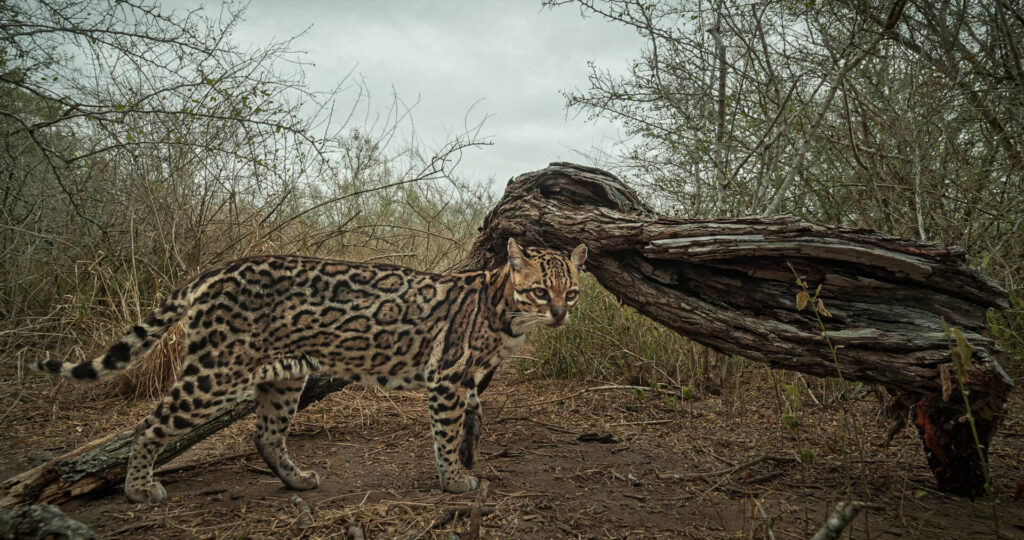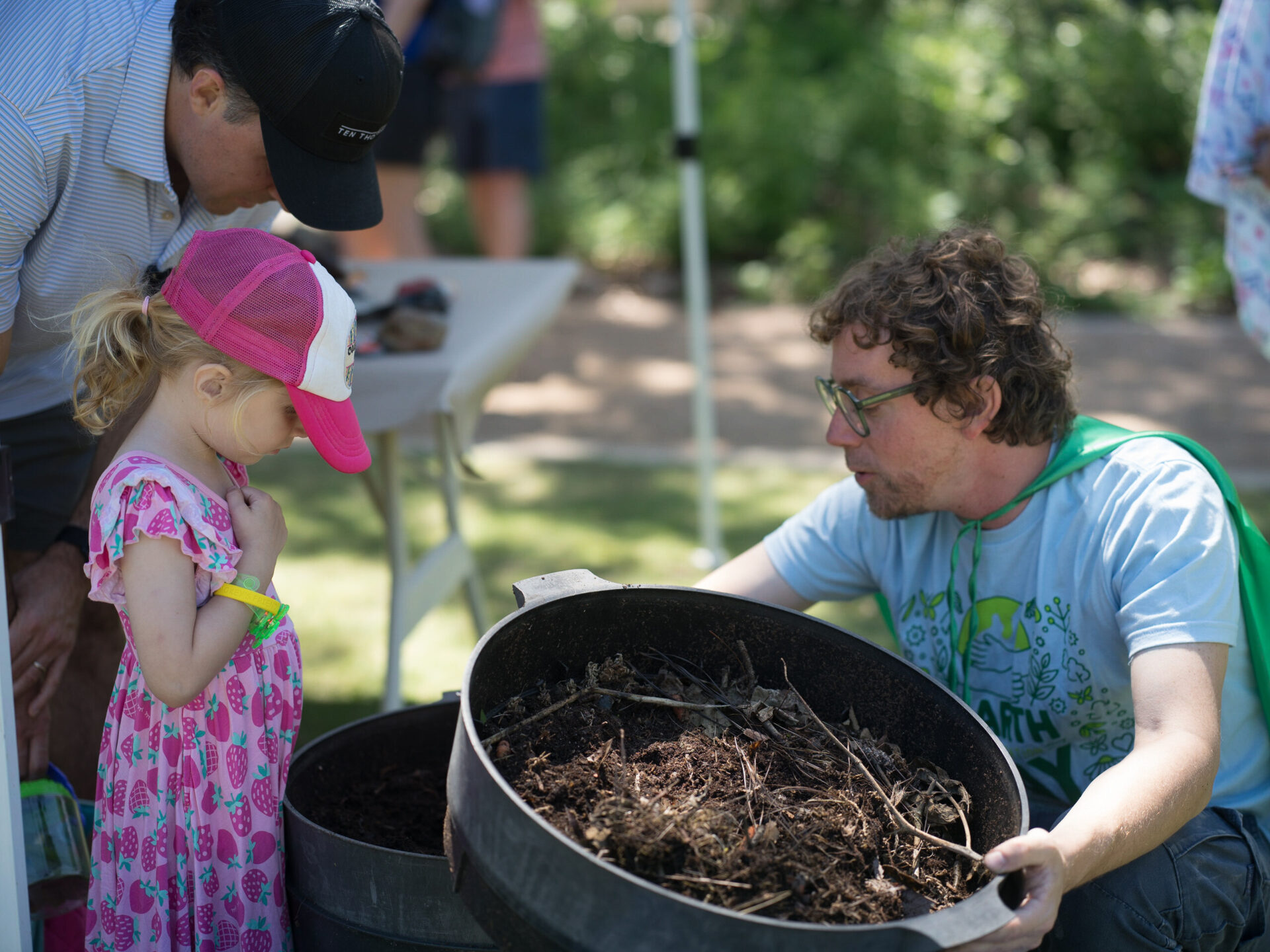Texas’ Endangered Ocelots
Deep in the thornscrub brush of South Texas, in the Lower Rio Grande Valley, you’ll find most of the United States’ remaining wild ocelots. With an estimated population of less than 100, ocelot extinction in the U.S. is a real and dangerous possibility.

What is an ocelot?
Often called the “little leopard,” these medium-sized, mostly nocturnal wild cats are primarily found in Central and South America, and parts of Mexico. They used to be more prevalent in South Texas, Louisiana, Arizona, and Arkansas, but their population has shrunk to only the most southern tip of the Lone Star State. Similar in size to a bobcat, ocelots typically reach 30-41 inches in length and 15-30 pounds as adults and are identifiable by their leopard-like patterned fur, rounded ears, and long, ringed tail.
Ocelots have very sharp claws, strong, sharp teeth, and can run much faster than humans. They also have better senses of smell than humans, as well as keen vision & hearing. Ocelots prefer to live and hunt in areas of dense brush cover, making South Texas a prime location. Unique among many wild cat species, ocelots can turn their ankle joints around to climb down trees—combined with their swimming skills and retractable claws, they are well-equipped to escape predators.
Why are ocelots important to Texas’ environment?
Every animal plays a key role in their environment, whether as plant pollinators, pest control, or producing nutrients for other animals and plants. Ocelots are a key component of the deep South Texas brush ecosystem. As carnivores (meat eaters), they help control the local small mammal & bird population. Their primary diet consists mostly of mice, rabbits, rats, birds, snakes, lizards, fish, and frogs, which they hunt primarily at night.
Texas was once home to six wild cat species, including jaguars, margays, jaguarundis, bobcats, cougars, and ocelots. Today, only ocelots, bobcats, and cougars remain. The loss of the biological diversity of even these few species creates a huge impact on the overall animal population & environment of the Lone Star State. It’s vital that the ocelot population begins to rebound before a catastrophic disease, fire, or other natural disaster wipes out the cats that remain.
Why are Texas’ ocelots endangered?
In a word: Humanity. As Texas’ population grows, so has urban spread, agriculture, and transportation land development. All these have led to the reduction of the ocelot’s preferred habitat. Ocelots require an average of one to four square miles of good quality brushland for their habitats and hunting grounds, but these areas are rapidly shrinking. With more people on more highways in South Texas, road death is a major risk for ocelots.
Ocelots were once hunted for their beautiful, patterned fur pelts, and still are in some parts of the world. As a protected endangered species since 1972, ocelot hunting is illegal in the U.S., as is the sale or purchase of goods made from ocelots.

What’s being done to protect Texas’ ocelots?
H-E-B is proud to support the East Foundation and the Caesar Kleberg Wildlife Research Institute at Texas A&M University in their work to research and protect wild ocelots.
About the East Foundation
With over 217,000 acres of native rangeland spanning Jim Hogg, Kenedy, Starr, and Willacy counties, the East Foundation has one of the largest ranch holdings in Texas. The Foundation continues the land stewardship of the original East family. Their work includes raising cattle the old-fashioned way on wide open ranches, conserving native wildlife, educating the public, and performing scientific research. They use their lands as a working laboratory: Ranch managers and scientists work together to address rangeland health, sustainable ranch productivity, and wildlife management.
About the Caesar Kleberg Wildlife Research Institute at Texas A&M University
The nonprofit Caesar Kleberg Wildlife Research Institute at Texas A&M University at Kingsville was established in 1981 through a grant from the Caesar Kleberg Foundation for Wildlife Conservation. As the leading wildlife research organization in Texas, they provide science-based information for enhancing the conservation and management of Texas wildlife. CKWRI researchers partner with private landowners to perform research on their lands.
What can Texans do to help ocelots?
Join H-E-B in supporting the Caesar Kleberg Wildlife Research Institute’s ocelot research. With Texans’ help, scientists will be able to understand and preserve the wild ocelot population, so that it can continue being a vital part of the south Texas ecosystem for many, many years to come.
Want more? Watch our short documentary film about ocelot conservation, “Ranching With Ocelots,” from the H-E-B Presents: An Our Texas, Our Future film series.


